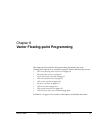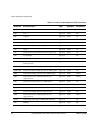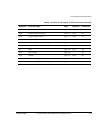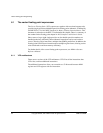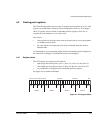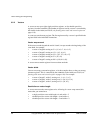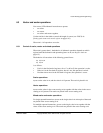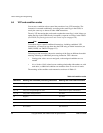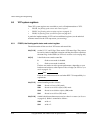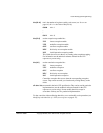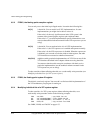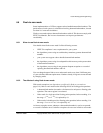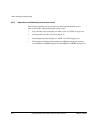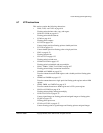
Vector Floating-point Programming
6-8 Copyright © 2000, 2001 ARM Limited. All rights reserved. ARM DUI 0068B
6.4 VFP and condition codes
You can use a condition code to control the execution of any VFP instruction. The
instruction is executed conditionally, according to the status flags in the CPSR, in
exactly the same way as almost all other ARM instructions.
The only VFP instruction that can be used to update the status flags is
FCMP
. It does not
update the flags in the CPSR directly, but updates a separate set of flags in the FPSCR
(see FPSCR, the floating-point status and control register on page 6-10).
Note
To use these flags to control conditional instructions, including conditional VFP
instructions, you must first copy them into the CPSR using an
FMSTAT
instruction (see
FMRX, FMXR, and FMSTAT on page 6-33).
Following an
FCMP
instruction, the precise meanings of the flags are different from their
meanings following an ARM data-processing instruction. This is because:
• floating-point values are never unsigned, so the unsigned conditions are not
needed
• Not-a-Number (NaN) values have no ordering relationship with numbers or with
each other, so additional conditions are needed to allow for unordered results.
The meanings of the condition code mnemonics are shown in Table 6-2.
Table 6-2 Condition codes
Mnemonic Meaning after ARM data processing instruction Meaning after VFP FCMP instruction
EQ
Equal Equal
NE
Not equal Not equal, or unordered
CS / HS
Carry set / Unsigned higher or same Greater than or equal, or unordered
CC / LO
Carry clear / Unsigned lower Less than
MI
Negative Less than
PL
Positive or zero Greater than or equal, or unordered
VS
Overflow Unordered (at least one NaN operand)
VC
No overflow Not unordered




